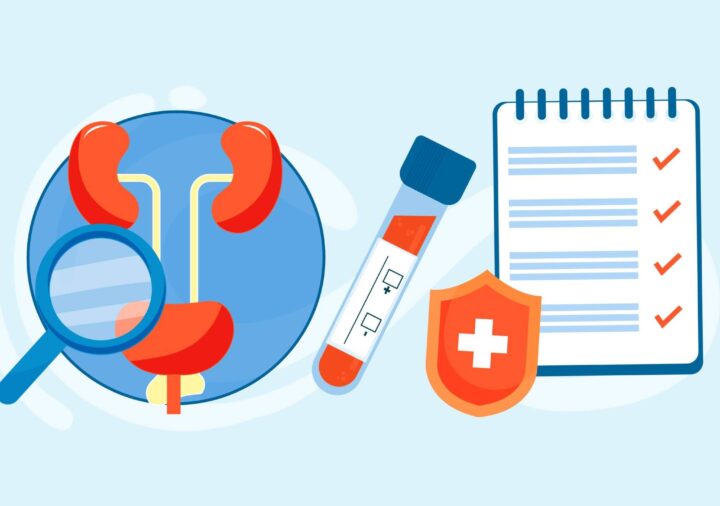
Your cart is currently empty.

A routine prostate exam (also known as a digital rectal exam or DRE) is essential in evaluating the risks and symptoms of prostate cancer, benign prostatic hypertrophy (or enlarged prostate), prostatitis (inflammation), and other prostate-related conditions. As one in nine men will be diagnosed with prostate cancer in their lifetime, prostate tests and exams are highly recommended for all men of a certain age (especially those at an increased risk).1 Once you reach your recommended prostate exam age, you’ll want to consult with your physician about setting up your first regular exam. In the meantime, we’ve put together a general overview of exactly what you need to know about your first prostate exam.
Generally, you’ll want to schedule your first prostate exam at the age of 50. However, if you are considered to be at a higher risk of prostate cancer, you’ll want to consider starting annual exams around the age of 40.2 African-American men, as well as any male with a genetic history of prostate cancer are said to be at an elevated risk. And of course, if you’re not in one of these groups but your doctor deems you to be at high risk for one reason or another, they might suggest getting tested in your 40s or even sooner in some cases. Your doctor will be able to advise you as far as when you should look into getting your first prostate exam, although 50 years old is the widely accepted standard.
Once men reach prostate exam age, it’s recommended that they get a prostate exam at least once every four years, although annually is preferred.2 Obviously, those at an elevated risk of prostate cancer should consult with a physician to see if more frequent testing would be beneficial.
You don’t need to do any sort of preparation for a prostate exam. You don’t need to fast or drink any special liquids ahead of time. You will want to let your doctor know ahead of time if you have hemorrhoids, anal fissures, or other issues that could potentially become aggravated with the procedure.3
In preparation for your exam, your healthcare provider will ask that you remove your clothes from the waist down and put on a hospital gown. You’ll be asked to stand and bend at the waist or to lie to one side with your knees bent and pulled to your chest. The examiner will then put on rubber gloves if they haven’t already and apply lubricant to one finger. They’ll assess the area around the rectum for abnormalities, then insert the lubricated finger into the rectum to feel for bumps, swelling, nodules or other areas of concern on the prostate itself. This process typically takes less than 20 seconds.3
While the examination itself might be a little uncomfortable, it is not a painful procedure by any means. After a few seconds, the anal sphincter will relax and the pressure will be substantially less intense. Some men have a sudden urge to urinate once they feel pressure applied to the prostate, but this only lasts the duration of the exam. Keep in mind, this process only takes a few seconds and the corresponding discomfort is a small price to pay to ensure your health and your well-being.
While we don’t perform DREs in our facilities, we do offer a PSA (prostate-specific antigen) blood test that will identify the amount of the PSA protein in your blood. Typically, 4 nanograms per milliliter of blood is the highest you’ll find in healthy males. However, a higher figure doesn’t necessarily mean that your cancer risk is higher and a lower number doesn’t necessarily mean that you are cancer-free. Though not a viable alternative to a regular DRE, and not exclusive to those at the typical prostate exam age, this test can help identify inflammatory or enlarged prostate issues and make you more aware of your prostate cancer and prostatitis risks. If your results reveal you are at an elevated risk, you may wish to speak with one of our care counselors and we do advise that you schedule an appointment with your primary care physician to discuss further steps.
“Is It the Prostate or Prostrate Gland? What Does It Do?” Prostate Cancer Foundation, September 24, 2020. https://www.pcf.org/about-prostate-cancer/what-is-prostate-cancer/prostate-gland/.
“Prostate Cancer: Symptoms, Diagnosis & Treatment.” Cleveland Clinic. Accessed October 19, 2021. https://my.clevelandclinic.org/health/diseases/8634-prostate-cancer.
“5 Things Men Should Know about a Prostate Exam.” Piedmont Healthcare. Accessed October 19, 2021. https://www.piedmont.org/living-better/5-things-men-should-know-about-a-prostate-exam